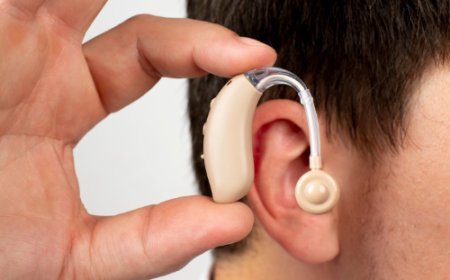Can I Breastfeed After Breast Augmentation?

Breast augmentation remains one of the most commonly performed cosmetic surgeries worldwide, offering women the opportunity to enhance their physical appearance and self-confidence. While many women seek this procedure for aesthetic reasons, others are concerned about its implications on future maternal functions, particularly breastfeeding. The question “Can I breastfeed after breast augmentation?” is a common and valid concern for women who are planning to become mothers or grow their families in the future. Fortunately, most women can successfully breastfeed after undergoing Breast Augmentation in Islamabad, but outcomes can vary depending on individual anatomy, surgical technique, and type of implant.
This comprehensive guide explores how breast augmentation affects lactation, what factors influence breastfeeding ability post-surgery, and what women can do to optimize their chances of nursing successfully.
Understanding the Breastfeeding Process
To better assess how breast augmentation might affect breastfeeding, it is important to understand how lactation works. Breastfeeding involves:
-
Milk Production: Triggered by hormonal signals from the pituitary gland.
-
Milk Storage: In the glandular tissue within the breasts.
-
Milk Ejection: Controlled by nerve responses and muscular contractions around milk ducts.
Successful breastfeeding requires intact glandular tissue, functional milk ducts, and undisturbed nerves, particularly around the nipple area. If surgical techniques impact any of these structures, lactation may be affected.
Does Breast Augmentation Prevent Breastfeeding?
In most cases, breast augmentation does not prevent breastfeeding. However, individual outcomes may differ based on several factors:
1. Type of Incision Used
The location of the surgical incision plays a major role in determining whether the nerves or ducts associated with breastfeeding are disrupted.
-
Inframammary Incision (under the breast fold): Least likely to interfere with milk ducts or nerves. This is generally considered the safest option for women wishing to breastfeed in the future.
-
Transaxillary Incision (in the armpit): Also avoids the breast tissue and is unlikely to affect lactation capabilities.
-
Periareolar Incision (around the nipple): This method carries a higher risk of nerve and duct disruption, which can impact both milk production and the ejection reflex. Loss of nipple sensation may indicate nerve damage, which can affect milk letdown.
Women considering future breastfeeding are often advised to avoid periareolar incisions if possible.
2. Implant Placement
Where the implant is positioned in relation to the breast tissue also affects breastfeeding capability.
-
Subglandular Placement (above the chest muscle): Implants sit closer to the mammary glands and ducts. There’s a higher likelihood of compressing the breast tissue, which might interfere with milk flow.
-
Submuscular Placement (below the chest muscle): Preferred for women wanting to breastfeed, as it reduces the risk of interfering with milk-producing tissue and ducts.
Submuscular placement is also associated with a more natural breast contour and fewer issues with visibility or rippling.
3. Type of Implant
While saline and silicone implants do not inherently prevent breastfeeding, the material may affect comfort or sensitivity:
-
Silicone Implants: Mimic natural tissue and are less likely to cause rippling. Some women express concern about silicone leaking into breast milk, but studies indicate that silicone levels in breast milk are minimal and pose no known risk to infants.
-
Saline Implants: Also safe, but may feel less natural to the touch. They don’t interfere with lactation processes directly.
Neither type of implant has been shown to be toxic or dangerous during breastfeeding.
Breastfeeding Success After Augmentation: What the Research Says
Numerous studies have assessed whether women with breast implants can breastfeed successfully:
-
A systematic review published in the International Breastfeeding Journal concluded that most women with breast implants can produce adequate milk, particularly when the surgical approach avoids nipple involvement.
-
However, women who underwent periareolar incisions or who had complications such as capsular contracture showed a slightly reduced ability to produce full milk volumes.
-
The American Society of Plastic Surgeons confirms that breast augmentation, when performed properly, is compatible with successful lactation in the majority of patients.
Ultimately, the success of breastfeeding depends not only on surgical factors but also on individual biology, support, and proper infant latch techniques.
Signs of Possible Breastfeeding Challenges After Augmentation
Some women may experience certain complications that can hinder their ability to breastfeed effectively. Warning signs include:
-
Reduced Nipple Sensation: May signal nerve damage that affects milk ejection.
-
Milk Supply Issues: Particularly common in women with minimal glandular tissue pre-surgery.
-
Engorgement or Pain: Due to compression from implants or milk flow obstruction.
-
Difficulty with Latching: Resulting from changes in nipple structure or orientation.
If you experience these challenges, prompt consultation with a lactation consultant or healthcare provider can provide targeted solutions.
Tips to Improve Breastfeeding Success After Breast Augmentation
For mothers who wish to breastfeed following augmentation, certain strategies can increase the likelihood of success:
1. Communicate with Your Surgeon
Before surgery, inform your surgeon of your future breastfeeding intentions. They can select techniques and implant placements that minimize the risk to lactation functions.
2. Monitor Nipple Sensation Post-Surgery
Sensory feedback from the nipples is critical for the hormonal cascade involved in milk letdown. If sensation is lost immediately after surgery, monitor its return closely.
3. Start Breastfeeding Early
Early initiation and frequent breastfeeding stimulate milk production and encourage natural hormonal responses. Skin-to-skin contact with the baby in the first hour of birth also supports successful nursing.
4. Use Both Breasts Equally
To maintain milk supply and prevent engorgement, alternate breasts during feedings.
5. Consult a Lactation Expert
A certified lactation consultant can assess your baby’s latch, evaluate milk transfer, and suggest methods to overcome anatomical or surgical obstacles.
Addressing Common Myths About Breastfeeding After Augmentation
Myth 1: “You can’t produce enough milk with implants.”
Fact: Most women produce adequate milk. Issues with milk supply are more likely related to pre-existing glandular deficiency or improper latch rather than implants.
Myth 2: “Breast implants contaminate breast milk.”
Fact: There’s no scientific evidence suggesting harmful substances from implants leach into breast milk. Both saline and silicone are considered safe during lactation.
Myth 3: “Implants always interfere with milk flow.”
Fact: If placed correctly and with appropriate surgical technique, implants rarely block milk ducts or compress tissue significantly.
Myth 4: “You must choose between breastfeeding and augmentation.”
Fact: With informed decisions and skilled surgical planning, both goals can be achieved.
Psychological and Emotional Considerations
Women often worry that breast augmentation may hinder their ability to be nurturing, especially if breastfeeding becomes difficult. It's important to remember that:
-
Breastfeeding is just one aspect of maternal care. Even if full nursing is not possible, partial breastfeeding or supplemental feeding can still support bonding and infant health.
-
Self-confidence and body image improvements from augmentation can positively affect a mother’s emotional well-being, which also benefits her child.
There is no singular way to be a good mother, and breastfeeding success is not a measure of maternal adequacy.
When to Avoid Breastfeeding After Augmentation
While most women can breastfeed safely, there are certain instances where medical advice may suggest caution:
-
Infection or Capsular Contracture: Active complications may necessitate avoiding nursing until the condition is treated.
-
Implant Rupture or Leakage: In rare cases of silicone rupture, especially with older implants, further evaluation is needed before resuming breastfeeding.
-
Underlying Medical Conditions: Certain autoimmune or hormonal disorders may limit milk production irrespective of implants.
Future Planning: Considering Breastfeeding Before Augmentation
If you are planning to become pregnant in the future and wish to breastfeed:
-
Discuss your goals explicitly with your plastic surgeon. They can adjust techniques and strategies accordingly.
-
Consider timing: Some women choose to delay augmentation until after childbearing to prevent any risk of interference with lactation or breast changes due to pregnancy.
Revision Surgery and Lactation
If you've already had a breast augmentation and are considering revision surgery, your breastfeeding capability may be further influenced. Scar tissue, prior incisions, and new implant positioning can create additional challenges.
Ensure you consult with a qualified surgeon experienced in both primary and revision breast augmentation cases to preserve function as much as possible.
Conclusion
The ability to breastfeed after breast augmentation depends on several interconnected factors, including surgical technique, incision location, implant placement, and individual anatomy. Most women with breast implants can nurse their babies without difficulty, particularly when their surgery was planned with lactation in mind. Open communication with your plastic surgeon and postpartum support from lactation consultants can further enhance your chances of success. If you’re considering Breast Augmentation in Islamabad, working with a reputable and experienced team is vital to achieving both aesthetic goals and preserving natural functions. The SKN Cosmetics clinic offers comprehensive consultation and personalized care to help you make informed decisions that align with both your current lifestyle and future plans.
What's Your Reaction?




























































